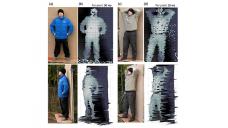
It allows to keep PV going, with more focus towards AI, but keeping be one of the few truly independent places.
-
A team in Edinburgh have developed a camera able to create 3D images up to one kilometre away.
While a standard camera takes flat, 2-D pictures physicists from Heriot-Watt University obtain 3-D information, such as the distance to a far-away object, by bouncing a laser beam off the object and measuring how long it takes the light to travel back to a detector. The technique is called time-of-flight (ToF), and is already used in automative vehicle vision navigation systems and other applications.
The new system works by sweeping a low-power infrared laser beam rapidly over an object. It then records, pixel-by-pixel, the round-trip flight time of the photons in the beam as they bounce off the object and arrive back at the source. The system can resolve depth on the millimetre scale over long distances using a detector that can ‘count’ individual photons. Lots of applications are planned for the technology.
Pictured below: 3-D images of two of the Optics Express authors, taken in daylight from 910m away. Each standard photograph shows a close-up view of what the scanner sees. The middle left panels show 3-D images with slightly more depth detail that the right-hand panels; this is because the detector spent more time collecting the returning photons for the images on the left than on the right. Credit: Optics Express.
http://www.hw.ac.uk/news-events/news/new-camera-system-creates-high-resolution-3-d-11809.htm

 camera-eps-800x450.jpg800 x 450 - 72K
camera-eps-800x450.jpg800 x 450 - 72K -
Ok, so now I just need Microsoft to mass produce it for around €100 so I can replace my kinects that loose all useable accuracy at 5m distance :]
-
I wonder what this method is good for. In anything but perfect weather the quality will at such distances suffer badly from aerosols, refraction due to temperature differences and air movement. Plus your target object has to keep steady for quite a long time, if you need 50ms per pixel - if you want a 100x100 pixel image, that takes already 8 minutes!
Seems like you could use this for mountain ranges or monuments on a few days per year.
-
Well yes, but don't all technologies start as experiments like this and then get refined into useable, marketable systems? Obviously primary applications will be military but with tech like this google will shoot it's next 3D street view from helicopters (drones?) or satellites instead of cars.
-
Liquid lens shrinks laser measuring device

Lasers are widely used in many areas of science, industry and medicine and the quality of the beams they produce needs to be measured to make sure they perform correctly. As electronic devices become smaller and smaller over time, these measurements become ever more important, as laser light needs to be directed onto smaller targets.
There are already commercial measuring devices available, but these can be slow, cumbersome and difficult to set up. The National Physical Laboratory (NPL) developed a prototype to shrink these devices to a more manageable size by using commercially produced liquid lens technology, which eliminates the need to physically move a lens when focusing the laser beam onto a detector.
(Did they just say, "liquid lens"?) I wonder whether digital imaging and laser technology might merge ever more!
Howdy, Stranger!
It looks like you're new here. If you want to get involved, click one of these buttons!
Categories
- Topics List23,992
- Blog5,725
- General and News1,354
- Hacks and Patches1,153
- ↳ Top Settings33
- ↳ Beginners256
- ↳ Archives402
- ↳ Hacks News and Development56
- Cameras2,367
- ↳ Panasonic995
- ↳ Canon118
- ↳ Sony156
- ↳ Nikon96
- ↳ Pentax and Samsung70
- ↳ Olympus and Fujifilm101
- ↳ Compacts and Camcorders300
- ↳ Smartphones for video97
- ↳ Pro Video Cameras191
- ↳ BlackMagic and other raw cameras116
- Skill1,960
- ↳ Business and distribution66
- ↳ Preparation, scripts and legal38
- ↳ Art149
- ↳ Import, Convert, Exporting291
- ↳ Editors191
- ↳ Effects and stunts115
- ↳ Color grading197
- ↳ Sound and Music280
- ↳ Lighting96
- ↳ Software and storage tips266
- Gear5,420
- ↳ Filters, Adapters, Matte boxes344
- ↳ Lenses1,582
- ↳ Follow focus and gears93
- ↳ Sound499
- ↳ Lighting gear314
- ↳ Camera movement230
- ↳ Gimbals and copters302
- ↳ Rigs and related stuff273
- ↳ Power solutions83
- ↳ Monitors and viewfinders340
- ↳ Tripods and fluid heads139
- ↳ Storage286
- ↳ Computers and studio gear560
- ↳ VR and 3D248
- Showcase1,859
- Marketplace2,834
- Offtopic1,320





